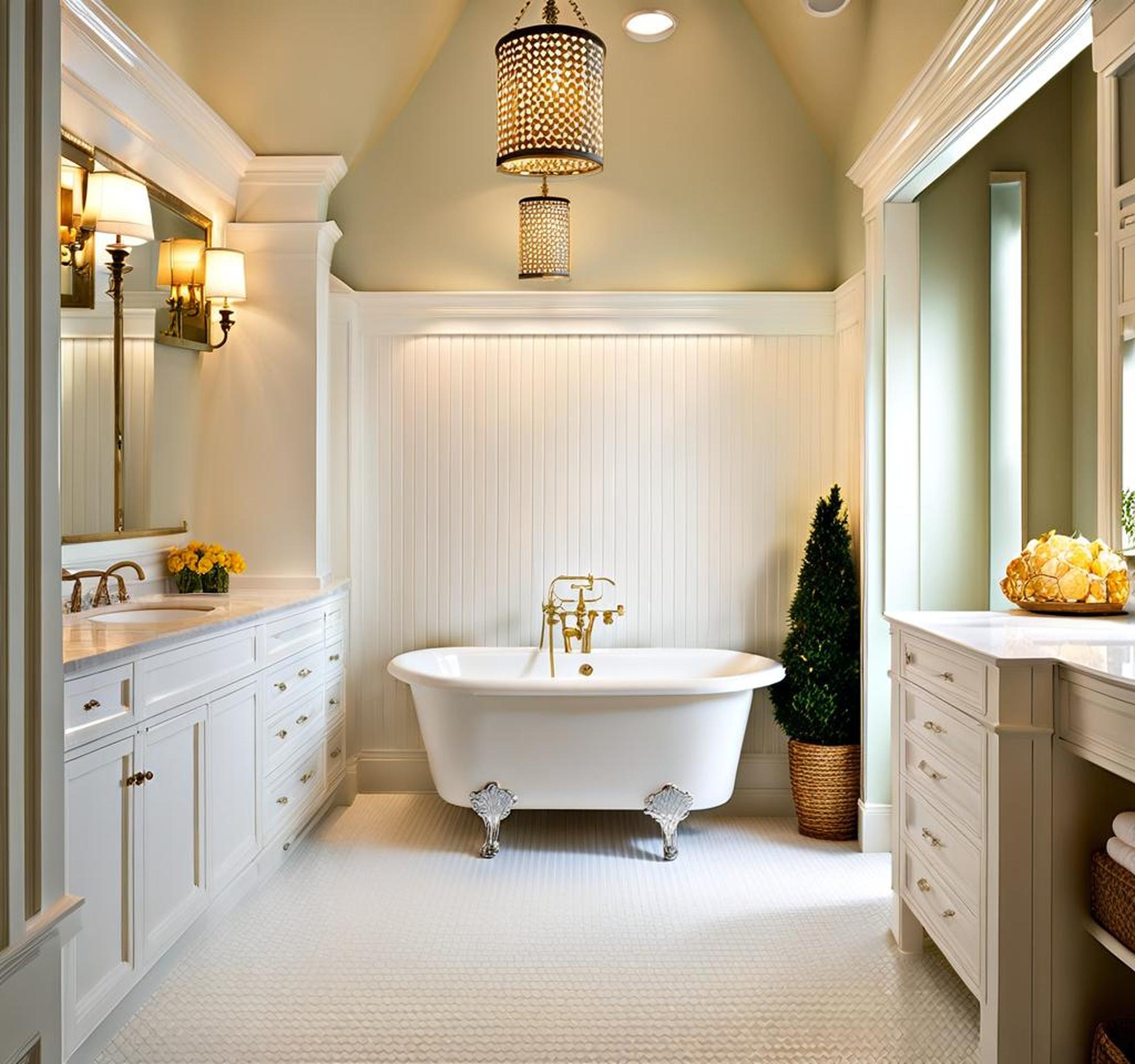White beadboard is an increasingly popular choice for bathroom walls and cabinets. The timeless appeal of white beadboard creates a lightweight and airy look that pairs nicely with any color scheme. If you’re considering using white beadboard in your next bathroom remodel or refresh, it’s important to choose the right style to complement your space.
There are a few key factors to take into account when selecting the perfect white beadboard style for your bathroom. Carefully considering your bathroom’s size and layout, existing features, natural lighting, preferred decor style, and budget will help guide you to the ideal beadboard for your needs.
Types of White Beadboard Materials
One of the first decisions to make is which beadboard material you want to use. The three main options are vinyl, PVC, and wood veneer.
Vinyl beadboard is waterproof and mildew-resistant, making it a great choice for humid bathroom environments. It’s also lightweight and easy to install. PVC beadboard is similar, providing durability and moisture-resistance. Both vinyl and PVC are cost-effective options.

Wood veneer beadboard has a more authentic, natural look. However, it requires careful installation and more regular maintenance to prevent warping from moisture. It also tends to be more expensive than synthetic materials.
Key Factors To Consider
Your Bathroom’s Size and Layout
Beadboard can work in big or small bathrooms, but the layout impacts how it can be incorporated. In a powder room, full walls of beadboard add cottage charm. In larger spaces, wainscoting allows it to provide texture without overwhelming.
Also consider if you want beadboard on the vanity cabinetry, as doors or side panels. Built-in shelving with beadboard backing is another option.
Complementing Your Existing Features
Look at your current tile, fixtures, and hardware finishes to select a white beadboard that complements the undertones. Warm antique brass pairs better with beadboard in a soft white versus stark bright white.
Beadboard with a cool gray wash can transition sleek stone floors to crisp white walls. Matching undertones creates a cohesive look.
The Amount Of Natural Lighting
The amount and type of lighting in your bathroom impacts how white beadboard is perceived. Rooms with ample natural sunlight can better support clean, bright whites. Warm incandescent bulbs may lend a yellowish cast on some whites.
Consider testing swatches on the wall at different times of day. Cool colored north light versus southern exposure makes a difference.
Your Preferred Decor Style
Are you aiming for a traditional, cottage, or contemporary look? White beadboard can work with any style, but some types have a more modern or coastal vibe.
For traditional, symmetrical penny tile floors and vintage accents complement traditional tongue-and-groove boards. Distressed DIY-style beadboard suits shabby chic cottages.
Budget
Beadboard material costs range widely, from value vinyl sheets to premium wood that requires professional installation. Factor in labor fees if you don’t plan on DIY. Creating a budget beforehand helps narrow options.
Popular White Beadboard Bathroom Styles
Classic & Timeless
A classic white beadboard bathroom exudes refined, timeless style. Full walls or wainscoting of wide planks with detailed trim create symmetry. Octagon tile floors and antique-inspired fixtures like a clawfoot tub complete the look.
Cottage & Coastal
For a relaxed cottage vibe, white beadboard wainscoting just 4-5 feet high adds texture without overwhelming a small space. Painted vanities with beadboard cabinet fronts and open shelving with beadboard backings enhance the look. A weathered wood accent wall or antique tub adds contrast.
Contemporary & Sleek
Crisp bright whites paired with cool gray-toned walls and stone tile allows white beadboard to feel modern. Full walls of sleek PVC beadboard make the space feel larger. Metallic accents and vessel sinks keep the look contemporary.
Tips For Installing White Beadboard
Once you’ve selected the perfect white beadboard style for your space, proper installation is key. Carefully prepare the surface by sanding and priming before applying adhesive. Measure widths and cut boards with a circular saw. Affix the beadboard pieces to wall studs using a finish nail gun. Use caulk between seams and install trim to get a polished finished look.
It can be difficult to decide which beadboard is right for your bathroom. By carefully considering the size and layout of your space, complementing existing features, lighting, preferred decor style, and budget, you can select the perfect beadboard to achieve your vision. From sleek and modern to cottage charm, white beadboard adds timeless style and texture. Approach your project thoughtfully and you’ll have a bathroom you love for years to come.
